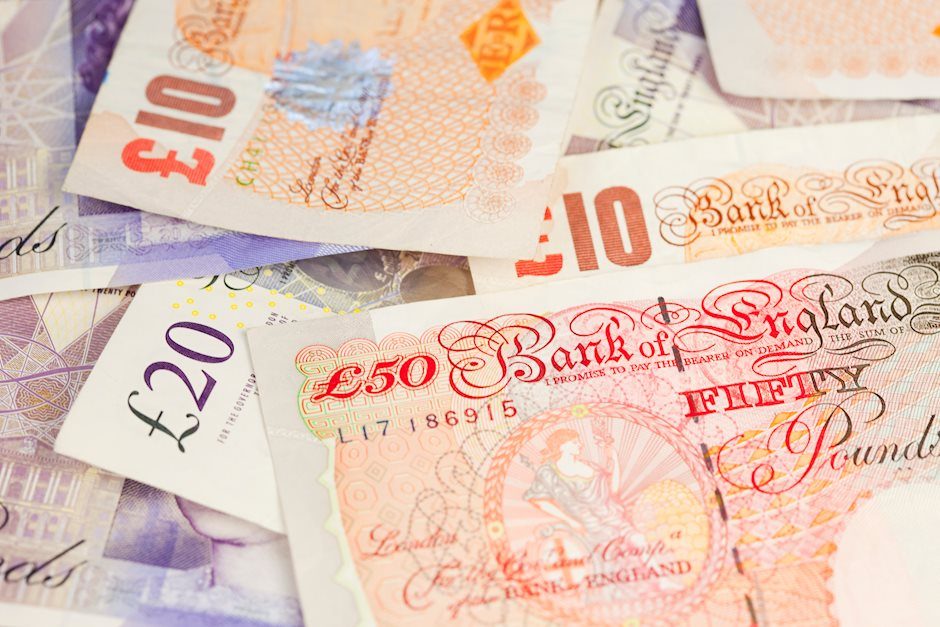GBP/USD remains firm above 1.3400 mark, highest since March 2022
- GBP/USD scales higher for the fifth straight day and climbs to a fresh 20-month peak.
- A combination of factors continues to weigh on the USD and lends support to the pair.
- The BoE’s relatively hawkish stance underpins the GBP and contributes to the move up.

The GBP/USD pair builds on its recent gains registered over the past two weeks and advances to its highest level since March 2022, around the 1.3430 region during the Asian session on Wednesday. Meanwhile, the fundamental backdrop suggests that the path of least resistance for spot prices is to the upside, though slightly overbought conditions on the daily chart warrant some caution for bullish traders.
The British Pound (GBP) continues to draw support from expectations that the Bank of England's (BoE) rate-cutting cycle is more likely to be slower than in the United States (US). In fact, BoE Governor Andrew Bailey said on Tuesday that the path for interest rates will be downwards, though the progress in this direction will be slow and unlikely to fall back to ultra-low levels without very big shocks. In contrast, the markets have been pricing in a more aggressive policy easing by the Federal Reserve (Fed), which keeps the US Dollar (USD) depressed near the YTD low and acts as a tailwind for the GBP/USD pair.
According to the CME Group's FedWatch Tool, the markets are currently pricing in over a 75% chance that the Federal Reserve will cut interest rates by another 50 basis points in November. Adding to this, Tuesday's weaker US macro data, along with the prevalent risk-on environment, continues to undermine the safe-haven buck and validates the near-term positive outlook for the GBP/USD pair. That said, the Relative Strength Index (RSI) on the daily chart has climbed beyond the 70 mark, making it prudent to wait for some near-term consolidation or a modest pullback and positioning for any further appreciating move.
Moving ahead, there isn't any relevant market-moving economic data due for release from the UK on Wednesday. That said, a scheduled speech by the BoE MPC Member Megan Greene might influence the GBP and provide some impetus to the GBP/USD pair. Later during the early North American session, New Home Sales data from the US might contribute to producing short-term trading opportunities. Traders, however, might refrain from placing aggressive bets ahead of speeches by influential FOMC members this week, including the Fed Chair Jerome Powell on Thursday, and the US PCE Price Index on Friday.
BoE FAQs
The Bank of England (BoE) decides monetary policy for the United Kingdom. Its primary goal is to achieve ‘price stability’, or a steady inflation rate of 2%. Its tool for achieving this is via the adjustment of base lending rates. The BoE sets the rate at which it lends to commercial banks and banks lend to each other, determining the level of interest rates in the economy overall. This also impacts the value of the Pound Sterling (GBP).
When inflation is above the Bank of England’s target it responds by raising interest rates, making it more expensive for people and businesses to access credit. This is positive for the Pound Sterling because higher interest rates make the UK a more attractive place for global investors to park their money. When inflation falls below target, it is a sign economic growth is slowing, and the BoE will consider lowering interest rates to cheapen credit in the hope businesses will borrow to invest in growth-generating projects – a negative for the Pound Sterling.
In extreme situations, the Bank of England can enact a policy called Quantitative Easing (QE). QE is the process by which the BoE substantially increases the flow of credit in a stuck financial system. QE is a last resort policy when lowering interest rates will not achieve the necessary result. The process of QE involves the BoE printing money to buy assets – usually government or AAA-rated corporate bonds – from banks and other financial institutions. QE usually results in a weaker Pound Sterling.
Quantitative tightening (QT) is the reverse of QE, enacted when the economy is strengthening and inflation starts rising. Whilst in QE the Bank of England (BoE) purchases government and corporate bonds from financial institutions to encourage them to lend; in QT, the BoE stops buying more bonds, and stops reinvesting the principal maturing on the bonds it already holds. It is usually positive for the Pound Sterling.
Author

Haresh Menghani
FXStreet
Haresh Menghani is a detail-oriented professional with 10+ years of extensive experience in analysing the global financial markets.

















